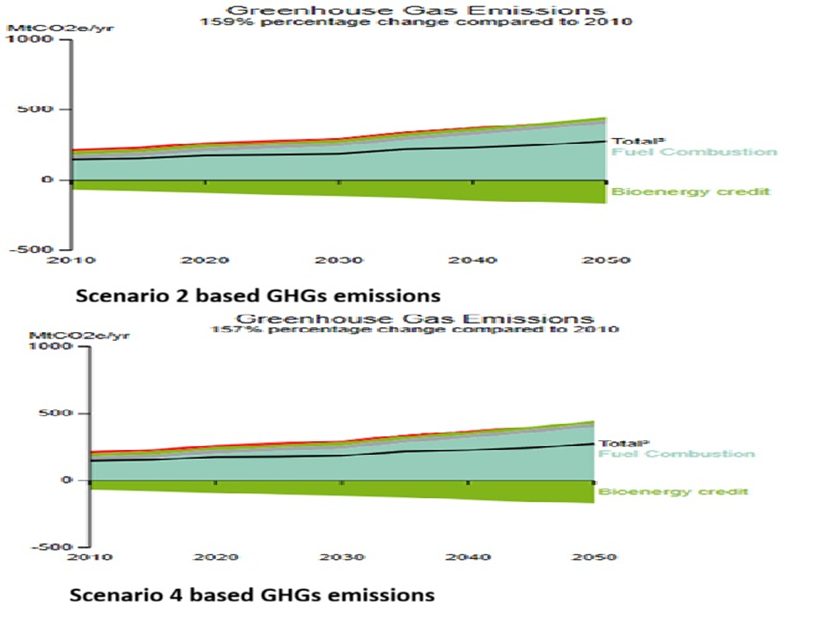Nigeria’s sustainable energy future: NECAL 2050 simulations of low carbon pathways
Project Researcher Muyiwa Michael OROSUN
Research Overview
This study utilized the NECAL 2050 model to analyze seven distinct energy pathways for Nigeria, ranging from a business-as-usual scenario to ambitious low-carbon strategies. The research identified Scenarios 2 and 4 as optimal pathways, combining high renewable energy penetration, widespread energy efficiency measures, and sustainable bioenergy use with minimal to moderate nuclear integration. These scenarios demonstrated remarkable outcomes, reducing greenhouse gas emissions by 54-55% and cutting harmful air pollutants by 75-76% compared to current trajectories.
The findings provide an evidence-based roadmap for Nigeria to simultaneously achieve its Paris Agreement commitments, expand energy access, and drive economic development. The study emphasizes that a diversified strategy prioritizing renewables and efficiency over reliance on any single energy source is crucial for success. This research offers critical insights for policymakers and highlights significant opportunities for international partners like Japan to support Nigeria’s transition through technology transfer and investment in clean energy infrastructure, ultimately positioning Nigeria as a leader in sustainable energy development within Africa.
Significance of the Study
This study provides Nigeria with a critical, evidence-based roadmap to overcome its dual crises of energy poverty and climate change, demonstrating that a balanced strategy of renewable energy, efficiency, and bioenergy can slash emissions by over half and drastically reduce deadly air pollution. Beyond Nigeria, the research highlights that integrated strategies, not reliance on singular technologies, are essential for the Global South to achieve sustainable growth, emphasizing the importance of international support and technology transfer for a resilient energy future.
Key Terms
- NECAL 2050 – Nigeria Energy Calculator 2050; the central simulation model adapted from the UK 2050 calculator.
- Sustainable Energy – ensuring energy access that is affordable, reliable, and environmentally friendly.
- Climate Change / Paris Agreement – global framework Nigeria aligns with to cut emissions (20% unconditional, 47% conditional).
- Greenhouse Gas Emissions (GHGs) – quantified as CO₂e (carbon dioxide equivalent).
- Low Carbon Pathways – scenarios that reduce emissions through renewables, efficiency, bioenergy, and nuclear options.
- Modeled scenarios:
- Reference: Business as usual, fossil-fuel heavy.
- Scenario 1: High renewables and nuclear, moderate efficiency.
- Scenario 2: Very high renewables, efficiency, bioenergy, low nuclear.
- Scenario 3: Balanced mix of renewables, nuclear, bioenergy, and efficiency.
- Scenario 4: Very high renewables and efficiency, moderate nuclear.
- Scenario 5: Moderate renewables, low nuclear.
- Scenario 6: Heavy nuclear reliance, low renewables and efficiency.
Figures


Publication
This paper is made available online on September 5, 2025, on the website of the academic journal “Environment, Development and Sustainability” published by Springer.
| Journal | Environment, Development and Sustainability |
|---|---|
| Title | Nigeria’s sustainable energy future: NECAL 2050 simulations of low carbon pathways |
| URL | https://doi.org/10.1007/s10668-025-06687-2 |
| Authors | Suleiman Bello1 and Muyiwa Michael Orosun2* 1Department of Physics, Umaru Musa Yar’adua University Katsina. 2Institute of Environmental Radioactivity, Fukushima University, Fukushima, Japan. *Corresponding author: Orosun. M. M. (r466@ipc.fukushima-u.ac.jp) |
